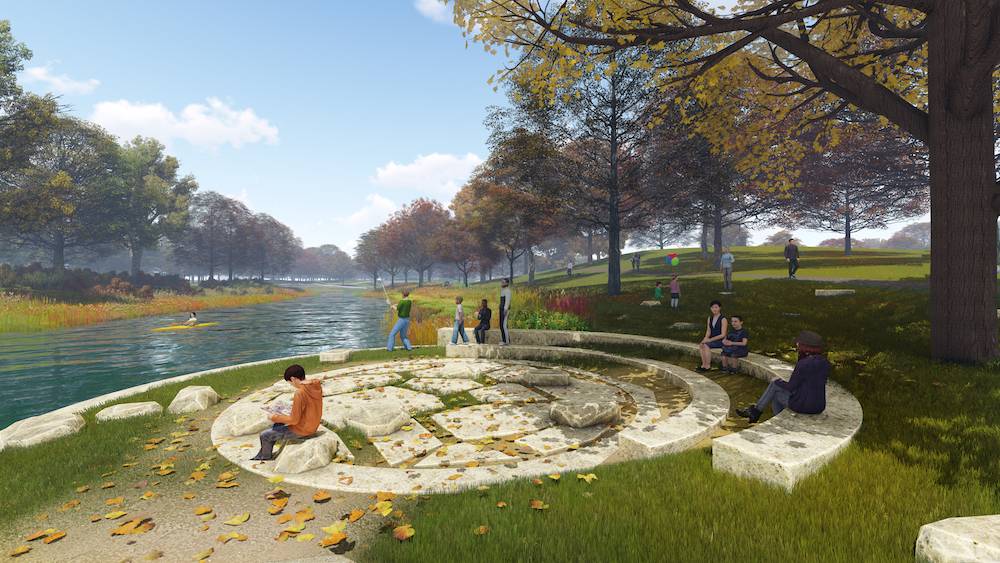The Urbana Park District has announced some rehabilitation, starting this month, for Crystal Lake Park. Parts of the park may be closed as the project persists, but the explanation of the work going on is truly fascinating.
To read about what UPD has to say about it, read their description below.
The photo above is a rendering of what a seating area along Broadway could look like. Rendering by Smith Group JJR.
The Urbana Park District has contracted with Stark Excavating to remove sediment from the sediment basin trap in Crystal Lake.
The project is expected to begin sometime in February. Portions of the park road may be closed periodically for truck traffic during the project.
This is the beginning of a multi-phase lake rehabilitation project that includes:
- efforts to improve water quality
- shoreline improvement and erosion management
- restoring native vegetation
- increasing connectivity throughout the park with the installation of paths and trails
The basin trap was added at the north end of the lake during the last lake rehabilitation in the 1980s. The lake is part of a larger watershed in the neighborhood and takes in drainage from nearby parking lots and streets.
According to park district staff, the basin has done its job and has kept many particles from entering the lake itself. However, it has now reached its capacity to hold sediment.
“Crews are expected to remove about 4,000 cubic yards of sediment from the trap, which will take several hundred truck loads,” explained project manager Caitlin Lill. Sediments will be transported to a certified waste facility.
“We will lower levels of the lake to allow the machinery better access to the trap. Additional water will be pumped out of the basin before the sediment is removed,” Lill said.
The park district also is upgrading Crystal Lake’s southern outlet to include a water level control structure, which provides the ability to lower lake levels now and in the future. For this, the district will dig an access manhole on Broadway Avenue at the lake’s east edge.
The sediment in and around the trap basin has tested with the highest levels of nutrients in the lake, contributing to overgrowth of nuisance plants such as watermeal and duck weed. Removing the sediment will help lower these nutrient levels over time in that area and the lake overall, Lill noted.
Questions about the lake rehabilitation project can be directed to Caitlin Lill or Derek Liebert at 217-344-9583.








